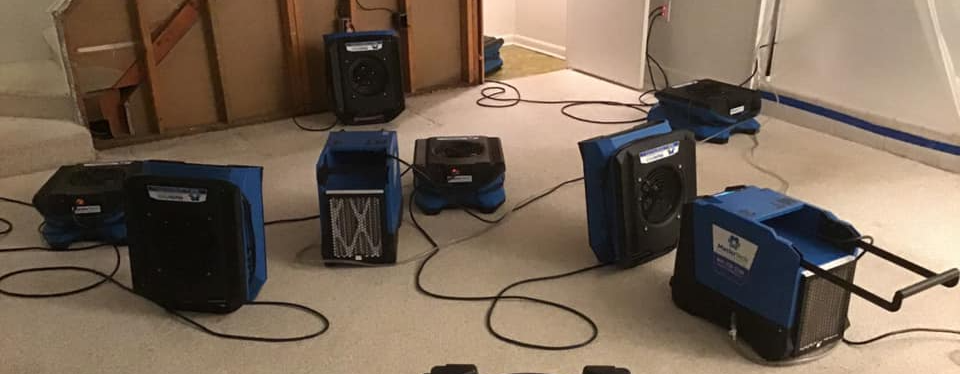Remove Mold that Appears After a Hurricane

Water Damage and Mold Growth After Storms
Professional Clean-Up Skills Matter
One of the challenges of attempting to restore parts of your home after water damage or mold is that it's really hard to fully dry out porous materials without industrial dryers. MasterTech Environmental of Myrtle Beach has dozen on industrial drying machines on board to quickly dry out areas that have been damaged by water, especially flooded spaces. We'll also use thermal imaging to determine moisture levels.
Moreover, using a professional service like MasterTech takes the guess work out of determining what is salvageable and what must be removed. If there is moisture inside a porous material, mold may grow from the inside out, reappearing days to weeks after you thought it was gone. It may be quicker and even more cost efficient to remove and replace damaged elements, and a professional cleaning team is best at determining which option is the best.
MasterTech uses a 12-step mold remediation process and always returns for a follow-up inspection as part of its service.
Mold Inspections, Mold Removal, Odor Removal, and Post-Storm Clean-Up
Mold Inspections and Mold Mold Testing: If water has entered your home, you may not yet see mold. In order to determine if mold is present, MasterTech Environmental can perform a mold inspection including a pin mold test to check inside of walls for mold. If mold is found, we can immediately remove the affected area and/or chemically clean it, killing mold spores and preventing new growth.
Odor Removal and Isolation Techniques: Water damage can also bring a musty and damp smell to your home. If affected furniture is removed and your home still smells, MasterTech Environmental of Myrtle Beach can perform an odor removal that doesn't rely on fragrant cover-ups. MasterTech uses EPA-approved professional-grade cleaning products that are safe for families and pets. Additionally, we will isolate affected areas from the rest of your home so you can take comfort knowing that odors and mold are isolated.
Hoarding Cleanup and Biohazard Cleanup: MasterTech is fully licensed to remove biohazard materials and waste. Our team is sensitive to individuals and families, and we can take care of large-scale clean-up and hoarding.
Call for an Estimate Today!
MasterTech Environmental of Myrtle Beach is the Grand Strand's solution for water damage, mold, and large clean-up jobs or hoarding. We are family-owned and operated, and we are happy to come out to assess your problem and provide you with an estimate. Call today -- 843-236-3399.



